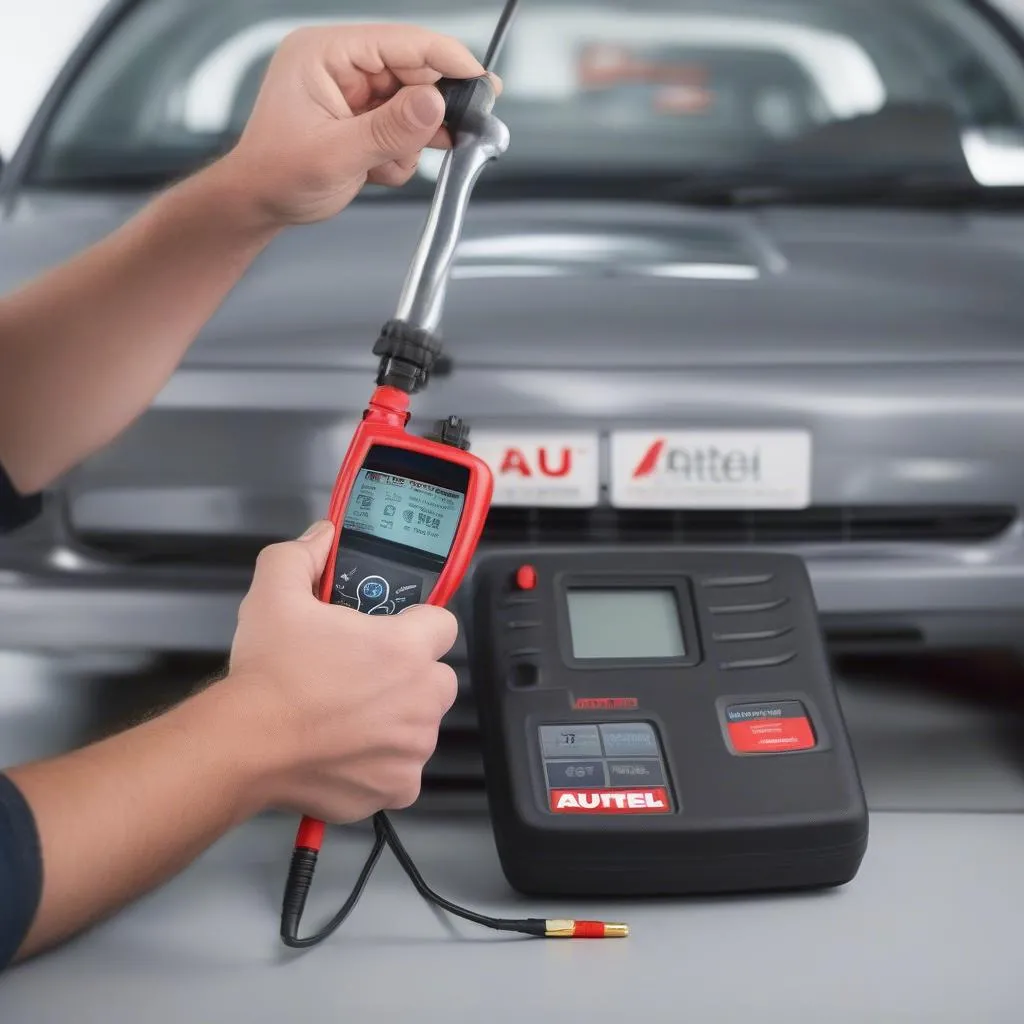Imagine this: you’re driving down a busy highway, enjoying the open road, when suddenly you feel a slight vibration in your steering wheel. You pull over, only to find that one of your tires is significantly flat. You’ve never felt this vibration before, and you’re not sure when or how the tire pressure dropped so dramatically.
This is where a TPMS tool comes in. A TPMS tool is a handy device that helps you monitor and manage your car’s tire pressure, ensuring a smooth and safe driving experience.
Understanding TPMS Tools: A Deep Dive
What is a TPMS Tool?
A TPMS (Tire Pressure Monitoring System) tool is a diagnostic device that allows you to monitor and adjust the tire pressure of your vehicle. It’s a crucial part of ensuring optimal vehicle performance, safety, and fuel efficiency.
Why is a TPMS Tool Important?
- Enhanced Safety: Driving with underinflated tires can lead to tire blowouts, a dangerous situation that can cause accidents. A TPMS tool helps you stay informed about your tire pressure and avoid potential hazards.
- Improved Fuel Efficiency: Underinflated tires increase rolling resistance, which in turn reduces fuel efficiency. A TPMS tool allows you to maintain optimal tire pressure, saving you money at the pump.
- Increased Tire Lifespan: Maintaining the correct tire pressure prevents excessive wear and tear, extending the life of your tires.
TPMS Tool Features: A Detailed Overview
TPMS tools come in various forms, each with its own unique features. Here are some of the common features you can expect:
- Wireless Connectivity: Many TPMS tools now offer Bluetooth or Wi-Fi connectivity, allowing you to monitor your tire pressure from your smartphone or tablet.
- Real-time Tire Pressure Readings: Get instant, accurate readings of each tire’s pressure, eliminating the need for manual checks.
- Visual and Audible Alerts: Be alerted to any sudden changes in tire pressure through visual displays or audible alarms.
- Tire Pressure Adjustment: Some TPMS tools enable you to adjust tire pressure directly from the device, making maintenance a breeze.
- Sensor ID Recognition: This feature allows you to easily identify each sensor and assign it to the correct tire position.
Popular TPMS Tool Manufacturers
Several reputable manufacturers produce high-quality TPMS tools, including:
- Autel (Known for its comprehensive range of tools, including the Autel MaxiTPMS, Autel MaxitPMS, Autel ITS600, Autel TS601, and Autel TS501)
- Bartec: Specializes in TPMS tools for various car brands.
Understanding TPMS Systems
TPMS systems are categorized as either Direct TPMS (dTPMS) or Indirect TPMS (iTPMS). Here’s a breakdown of each:
-
Direct TPMS (dTPMS): This type utilizes individual sensors placed inside each tire. The sensors transmit pressure and temperature data wirelessly to the vehicle’s control module, which then displays the information on the dashboard.
-
Indirect TPMS (iTPMS): This type uses the vehicle’s ABS (Anti-lock Braking System) sensors to indirectly measure tire pressure. Changes in tire pressure alter the wheel’s rotation speed, which the ABS sensors detect. The information is then relayed to the vehicle’s control module and displayed on the dashboard.
TPMS Tool FAQs
Q: Can I use a TPMS tool on any car?
A: Not necessarily. TPMS tools are designed to work with specific car models and brands. Some TPMS tools are universal and compatible with a wide range of vehicles, while others are brand-specific.
Q: How often should I check my tire pressure?
A: It’s recommended to check your tire pressure at least once a month and before long road trips. Always refer to your vehicle’s owner’s manual for the recommended tire pressure.
Q: What if I have a flat tire?
A: If you have a flat tire, you should immediately pull over to a safe location and call for assistance. Using a TPMS tool will help you identify which tire is flat and ensure you have the correct replacement tire.
Q: Can a TPMS tool diagnose other issues with my tires?
A: While TPMS tools primarily focus on tire pressure, some models can also provide information about tire temperature, wear and tear, and other potential problems.
Q: Is it difficult to use a TPMS tool?
A: Most TPMS tools are designed to be user-friendly. They often come with clear instructions and easy-to-follow steps.
Where to Buy a TPMS Tool
You can find a wide range of TPMS tools at automotive stores, online retailers, and specialized automotive diagnostic equipment suppliers.
TPMS Tool Maintenance: Keeping Your Tool in Top Shape
To ensure your TPMS tool functions properly, follow these basic maintenance tips:
- Regular Battery Check: Ensure the TPMS tool’s battery is fully charged before each use.
- Clean the Device: Clean the device regularly using a soft cloth to remove any dirt or debris.
- Store in a Safe Place: Protect your TPMS tool from extreme temperatures, moisture, and direct sunlight.
Conclusion
Investing in a reliable TPMS tool is a smart choice for any car owner. It’s an essential tool for ensuring your safety, maximizing fuel efficiency, and extending the life of your tires. With the information and guidance provided in this guide, you can confidently navigate the world of TPMS tools and make an informed decision that suits your needs.
If you need assistance with selecting or using a TPMS tool, or if you have any other questions about tire pressure monitoring systems, don’t hesitate to contact us. We’re here to help! You can reach us at +84767531508 (Whatsapp).
 Autel TPMS Tool
Autel TPMS Tool
 Tire Pressure Gauge
Tire Pressure Gauge
 TPMS Sensor
TPMS Sensor
For more information, you can also check out our other informative articles on TPMS tools and related topics: